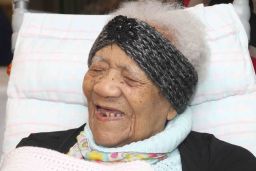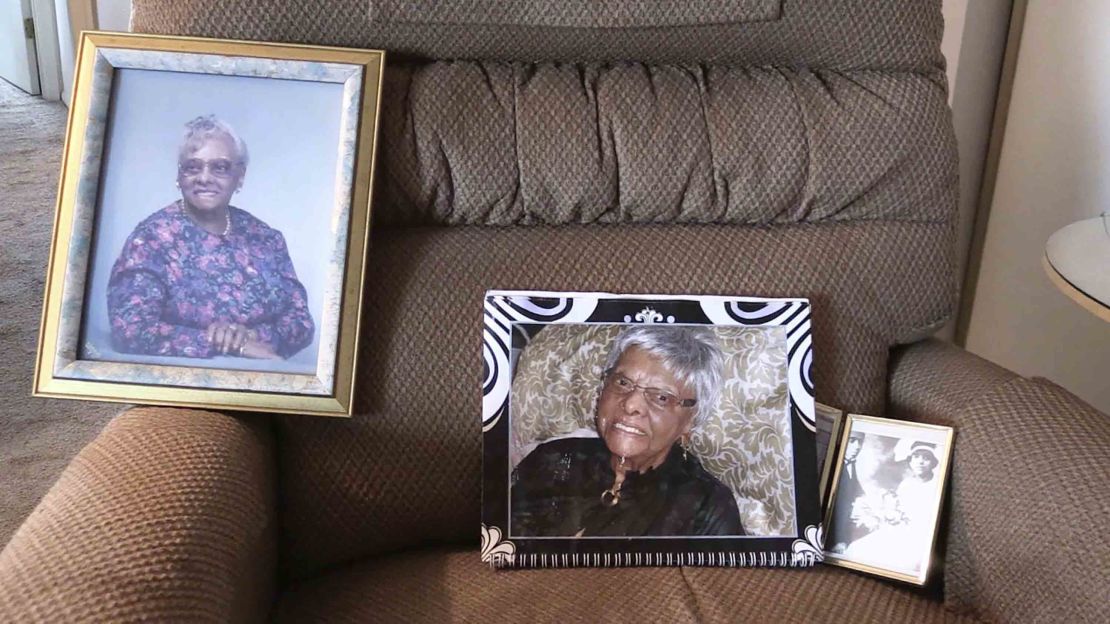There’s a new person holding the title for oldest in the United States.
After the death of 114-year-old Delphine Gibson of Pennsylvania last week, 113-year-old Lessie Brown of Cleveland Heights, Ohio, is the oldest person in the United States, according to the Gerontology Research Group, a research consortium that keeps track of centenarians and supercentenarians – people who live past 110.

Brown was born September 22, 1904, in Georgia. Theodore Roosevelt was re-elected President that year, and Wilbur and Orville Wright built their second powered aircraft.
She moved to Ohio in 1922, according to CNN affiliate WJW-TV. Brown told WJW-TV in 2015, when she was turning 111, that she was able to live so long because God blessed her.
“I’m thankful,” she said then.
CNN reached out to Brown’s family, but has not heard back.
Verline Wilson, Brown’s 88-year-old daughter, told Cleveland.com that her mother had five children, three of whom are still living. In 2015, WJW-TV reported that Brown had 24 grandchildren, 44 great-grandchildren and 26 great-great-grandchildren.

Wilson said her mother used to love sweet potatoes and yams.
“Everybody believed that was helping her” live longer, Wilson told WJW-TV on Friday. “I don’t believe it’s a secret; it’s her belief in God and he’s allowed this and I’m thankful for that,”
Brown is now confined to a bed, said Robert D. Young, director of the Gerontology Research Group’s research and data division.
Living past 100 years
There are 36 people in the world who are at least 112 years old, Young said, the oldest of them being 117-year-old Chiyo Miyako of Japan. About 90% of the supercentenarians are women.
Seven of the world’s oldest people live in the United States, Young said.
Explaining longevity involves explaining life itself, from heredity to lifestyle choices.
The human body, Young said, is designed to live between 100 and 120 years. But those who are fortunate enough to live past the century mark are those who had good genes to start with.
“No one lives to be 115 unless they win the genetic lottery,” he said. “A lot of the secrets to living a long time are common sense.”
There are common factors among the extremely elderly. For one, Young said, they’re usually “self-directed individuals.” That means they like to do thing themselves, like Besse Cooper of Monroe, Georgia, who Young said lived to be 116, and chopped down her own Christmas tree when she was 86.
“Supercentenarians are extraordinary people,” Young said. “They’re aging slower than normal and have better health than normal.”
Supercentenarians have a regular sleeping schedule throughout their lives. Young said those who slept seven hours or less had a 30% lower risk of mortality than people who slept five hours or less.
“When people put their health first, they live a few years longer than when they put their work first,” he said.
They also eat in small portions. Young said one woman who lived to be 116 loved fried chicken.
“People can get away with vices if they do it in small amounts,” he said.
Keeping track of the records
It’s not easy monitoring centenarians and supercentenarians.
Young said the Gerontology Research Group starts tracking people when they turn 108. If they live to 110, the group starts investigating and looking at various records to verify their age, such as census data, marriage and identification records. The goal, he said, is to complete that investigation by the time the person turns 112.
But that’s only if the organization can verify the birthday. Young says the group is either contacted by family members or they get information from news reports.
“Sometimes they turn out to be false,” Young said. “There’s quite a lot of fakers out there.”
A lot of the time people don’t know how old they are, because the United States didn’t have a central birth registration until 1933, Young said, and state registrations varied. The United States also doesn’t have a federal or central database on the world’s supercentenarians or centenarians.
The hope, Young said, is to have complete data on supercentenarians and centenarians by 2040.



